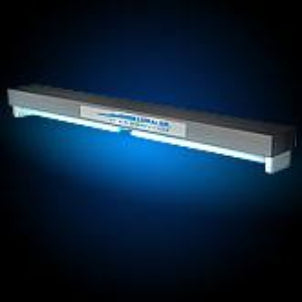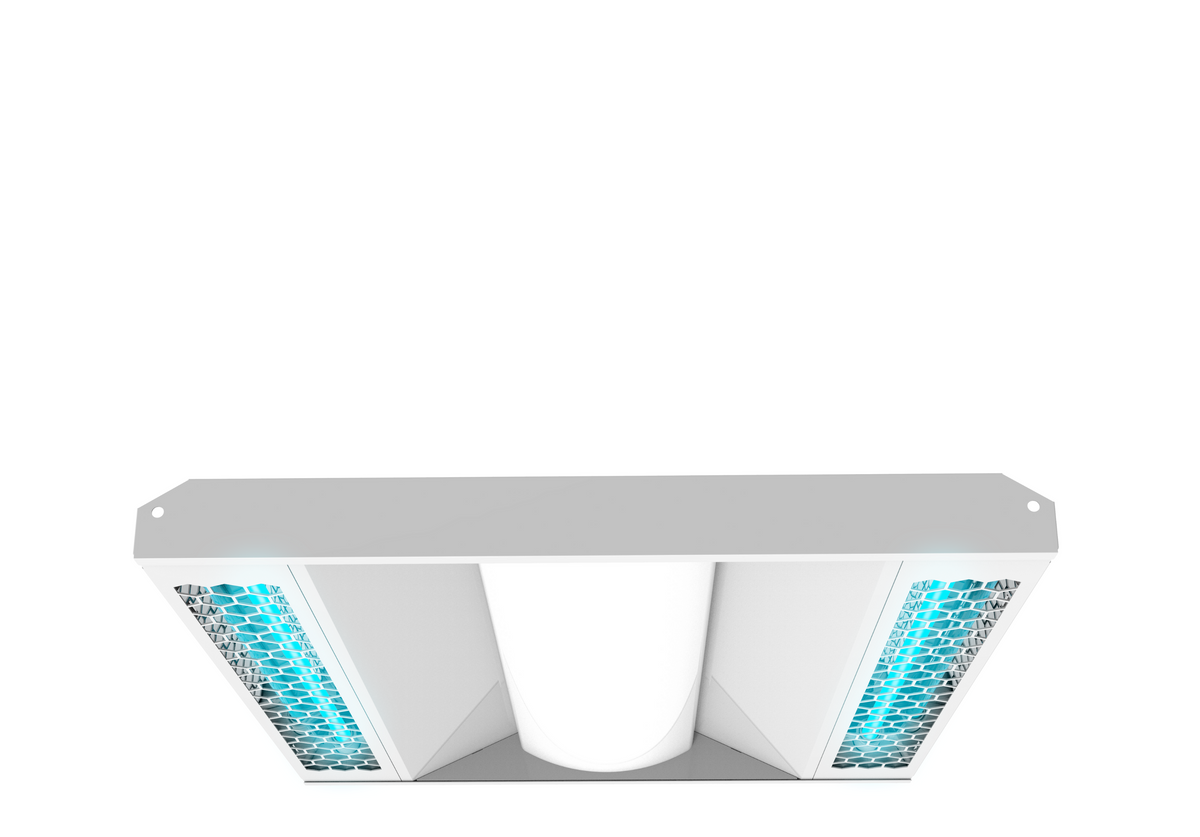UV Surface Disinfection Techniques: Making The Most Of Efficiency for Germ-Free Spaces
UV Surface Disinfection Techniques: Making The Most Of Efficiency for Germ-Free Spaces
Blog Article
Harnessing the Possible of UV Disinfection: Safeguarding Wellness and Hygiene
UV disinfection, an innovation extensively used in numerous industries, has proven efficient in removing hazardous virus. From comprehending the systems at play to applying this technology in our everyday lives, this conversation intends to shed light on the capacity of UV disinfection and its function in guarding our health and hygiene.
Recognizing UV Disinfection
UV disinfection is a very effective and commonly made use of method for getting rid of harmful microorganisms and making certain health and hygiene. This technique uses ultraviolet (UV) light to inactivate bacteria by damaging their DNA and avoiding them from replicating. UV sanitation is specifically reliable versus bacteria, infections, and various other microorganisms that can cause infections and diseases.
The principle behind UV disinfection is simple yet powerful. When UV light is sent out at a particular wavelength, it permeates the microorganism's cell wall and disrupts its hereditary product. This procedure, referred to as photodissociation, leads to the formation of thymine dimers, which prevent the microorganism from reproducing and making it harmless. UV sanitation can be used in various setups, consisting of water treatment plants, healthcare facilities, food processing sectors, and air filtration systems.
One of the benefits of UV disinfection is its capacity to successfully and efficiently remove a wide variety of virus without the need for additives or chemicals. Unlike other sanitation methods, such as chlorine or ozone, UV sanitation does not introduce harmful spin-offs or chemical residues right into the environment. In addition, UV disinfection is a non-contact procedure, which implies that it does not call for physical call with the microorganisms, reducing the threat of cross-contamination.

The Scientific Research Behind UV Sanitation
The efficiency of UV sanitation hinges on its capability to interfere with the genetic material of microbes, rendering them not able to reproduce and thereby eliminating their unsafe potential. UV, or ultraviolet, radiation is a type of electro-magnetic radiation with wavelengths shorter than visible light. It is classified right into three types: UV-B, uv-a, and uv-c. UV-C radiation, especially, has the shortest wavelength and the highest energy. This high-energy UV-C radiation is most reliable in sanitation applications because it can permeate the cell walls of microbes and harm their DNA or RNA.
When microbes are revealed to UV-C radiation, the power is soaked up by their hereditary product, triggering bonds to break and forming chain reactions that disrupt their ability to reproduce. This prevents the microorganisms from spreading out and reproducing infection. UV sanitation is specifically efficient versus microorganisms, fungis, and viruses, consisting of usual pathogens such as Escherichia coli, Salmonella, and Flu.
The scientific research behind UV sanitation is sustained by considerable study and researches. It has been shown that direct exposure to an adequate dose of UV-C radiation can attain a high level of sanitation, often going beyond 99.9% effectiveness in killing microbes. Nevertheless, it is necessary to keep in mind that the efficiency of UV sanitation depends upon various variables, including the strength of UV-C radiation, exposure time, range from the UV source, and the vulnerability of the microorganism to UV radiation.
Applications of UV Disinfection
Offered the considerable study and efficiency of UV sanitation in interrupting the hereditary material of microorganisms, it is very important to explore the various sensible applications of this modern technology. UV sanitation has verified to be a useful tool in a wide variety of industries where preserving a tidy and risk-free setting is necessary.
One significant application of UV disinfection is in healthcare setups. UV light can be utilized to disinfect surface areas, equipment, and also the air in medical facilities and clinical facilities. This assists to decrease the risk of healthcare-associated infections and guarantees a more secure atmosphere for patients and medical care workers.
An additional important application is in the food and beverage market. UV disinfection is utilized to treat water and get rid of harmful microorganisms, such as E. coli and Salmonella, from the manufacturing process. uv surface disinfection. This guarantees the security and high quality of the items we eat
UV sanitation is additionally extensively used in water treatment plants and wastewater treatment facilities. It is a reliable approach navigate to this site for ruining unsafe bacteria, viruses, and parasites that can be present in water sources. This assists to supply clean and risk-free alcohol consumption water to areas and protect the environment from contamination.
Furthermore, UV sanitation is utilized in the pharmaceutical sector to sterilize devices and preserve the honesty of items. It is additionally used in laboratories and study centers to protect against contamination and make sure precise results.
Benefits of UV Sanitation Technology
One significant benefit of employing UV sanitation modern technology is its capability to successfully eliminate microorganisms without using rough chemicals. This is specifically helpful in various settings, such as medical care centers, water treatment plants, and food processing sectors, where the existence of damaging microorganisms poses a significant risk to public wellness and security.
Unlike conventional disinfection approaches that depend on chemicals like chlorine or ozone, UV disinfection modern technology uses ultraviolet light to target and ruin the DNA of microorganisms, properly neutralizing their capacity to duplicate and trigger infections. This procedure not only removes the need for possibly hazardous chemicals yet also minimizes the risk of chemical deposit or byproducts staying in the cured atmosphere.

Moreover, UV sanitation technology is environmentally friendly. As it does not count on making use of chemicals, it removes the need for their transportation, disposal, and manufacturing, minimizing the general carbon impact related to disinfection processes. additional hints In addition, UV sanitation systems have a you could check here longer life expectancy contrasted to chemical-based approaches, resulting in less regular replacement and additional reducing waste.
Executing UV Sanitation in Life
To successfully apply UV disinfection in day-to-day live, companies and people can include mobile UV disinfecting devices into their hygiene routines and cleaning up methods. These gadgets are created to emit ultraviolet light, which has actually been confirmed to eliminate or suspend a variety of bacteria, consisting of viruses, germs, and fungi. By using portable UV sterilizing tools, individuals can decontaminate frequently touched things and surfaces, such as cellular phone, doorknobs, tricks, and laptops, lowering the danger of spreading out germs and infections.
Along with integrating mobile UV sterilizing devices, it is very important to comply with correct guidelines and referrals for efficient UV sanitation. This includes guaranteeing that the tool is used appropriately and for the recommended period to achieve ideal disinfection outcomes. It is additionally essential to focus on precaution, such as using safety eyeglasses and avoiding straight exposure of the UV light to the skin.

Moreover, companies can carry out UV disinfection technology in various settings to boost health techniques. For circumstances, health centers and medical care centers can utilize UV disinfection robotics to disinfect patient rooms, operating movie theaters, and other high-touch areas. Food handling industries can incorporate UV sanitation systems right into their manufacturing lines to enhance food safety and protect against contamination.
Conclusion
In final thought, UV disinfection modern technology holds excellent prospective in protecting health and hygiene. By harnessing the power of ultraviolet light, it properly eliminates hazardous microorganisms and minimizes the risk of infections. This modern technology can be used in numerous setups, such as medical facilities, water therapy centers, and public rooms, supplying a efficient and secure method of sanitation. With its numerous advantages, UV sanitation is an important tool for preserving a healthy and balanced and clean setting.
Unlike other disinfection approaches, such as chlorine or ozone, UV sanitation does not introduce harmful byproducts or chemical residues right into the setting. It is essential to keep in mind that the performance of UV disinfection depends on different variables, consisting of the intensity of UV-C radiation, direct exposure time, distance from the UV resource, and the sensitivity of the microorganism to UV radiation.
One more benefit of UV disinfection modern technology is its ability to give quick and continuous sanitation. Unlike handbook cleansing techniques, which can be lengthy and call for considerable labor, UV sanitation systems can be automated and operate constantly, ensuring constant disinfection without human intervention.To properly execute UV sanitation in everyday life, companies and people can include mobile UV sterilizing tools right into their hygiene regimens and cleansing techniques.
Report this page